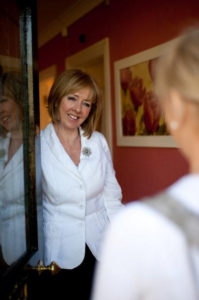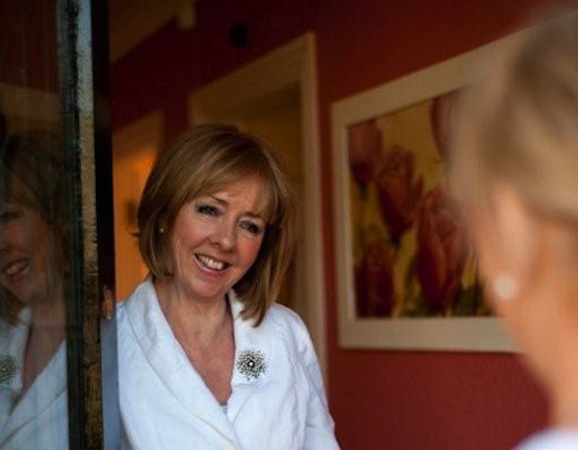How a brave woman turned a dark moment in her family history into a beacon for many grappling with thoughts of suicide. Sharon Ní Chonchúir talks to Joan Freeman, founder of Pieta House in Ireland.
I live on the Dingle Peninsula, a place with a small and closely-knit community. In the past year alone, I know of three men who have committed suicide. One was a married man who lived across the road from me. Another had been in my class at primary school. And the third was the son of a woman whose house I can see from my office window as I write.
According to statistics from the National Suicide Research Foundation, an average of 500 people commit suicide in Ireland every year – nine people every week. In a sign that the recession has taken its tragic toll, that figure climbed to 554 in 2011.
The figures are especially worrying in certain age groups. The suicide rate among teenage girls is higher in Ireland than it is in any other E.U. state. And suicide among young Irish males is more than twice the national average, and the second highest rate in Europe (Lithuania has the highest incidence of male suicides).
It would appear from the statistics that the suicide rate in Ireland is increasing. However, Joan Freeman, founder of Pieta House, an organization that provides a specialized program for people who have suicidal ideation, urges me to think again.
“It’s not a growing issue,” she says. “It’s just that finally people are not afraid to talk about it.”
Joan, a trained psychologist, opened the doors of the first Pieta House in Lucan, County Dublin on the 19th of January, 2006. She had borrowed €130,000 from the bank to fund it, using her house as collateral. Her team consisted of herself and another therapist along with a part-time receptionist, bookkeeper, and cleaner.

Her first priority was that the professional, face-to-face therapeutic services would be entirely free of charge. The second was for there to be no need for a doctor’s referral or psychiatric report to attend. And finally, that anyone could make the call for the person who was in distress.
“If someone falls and breaks their leg, nobody expects them to pick up the phone and call the ambulance,” she says.
“Why do we expect that of someone whose life is broken? Our aim is for Pieta House to be as accessible as possible.”
In the nine years since then, Pieta House has grown. It now has 180 staff working in nine centers throughout Ireland, and there are plans to open three more centers.
These services currently require € million in annual running costs. The Irish government donates €500,000. This means that Joan depends on charity to make up the shortfall.
Pieta House’s biggest fundraising event is the pre-dawn “Darkness into Light Walk.” It started in 2009 when 400 people gathered in Phoenix Park in the dark to walk together towards the light as dawn broke over the city Six years later, on May 9, more than 100,000 people in 80 places across three continents joined in the walk. They gathered in communities across Ireland and in London, Manchester, Liverpool, Glasgow, and Aberdeen in the U.K. They gathered in Sydney, Darwin, Brisbane, Melbourne, and Perth in Australia. In North America, they gathered in New York, Washington DC, Chicago, Vancouver, Toronto, and Calgary.
“There’s something miraculous about it,” Joan says of the walk.
“It’s a joyful, poignant and powerful event that is full of hope. Most who take part know somebody who has died by suicide. Some know people who are availing of our services. But there are others who want to experience it as something special and shared, an event where nobody walks alone.”
The idea for Pieta House grew out of Joan’s own grief over the suicide of her sister. “I spent three years researching to come up with the idea of a place I could bring [my sister] if she were still alive,” she says.
That idea was to move away from looking at suicide as a medical or psychiatric problem, and focussed on a solution-based approach instead. “Seventy percent of our clients have no history of mental illness at all. They’re just reacting to life events.
Nobody was asking them what was causing them to feel such enormous distress,” says Joan. “At Pieta House, we ask them these questions, all the while reminding them that they have so many reasons to live.”
Despite having done so much already, Joan hopes to do even more. “We’re keen to follow the Irish wherever they are,” she says. “When Irish people are in trouble, they want to hear another Irish accent. We can provide that for them.”
She is currently working on running a pilot project in New York in September. Pieta House will take a room in the Irish Immigrant Center in Queens and reach out to members of the Irish diaspora who need their services.
“At the beginning, we will focus on the Irish and Irish Americans,” says Joan. “They are who we know best, but we’ll never turn anyone away. Who knows? When the Americans see how our model works, they might decide to roll it out across the country!”
What keeps Joan and her team going is the realization that they are helping people. “Five thousand people came to see us last year. They say that for everyone who dies through suicide, there are fifty more who are affected. But that means because of Pieta House, 250,000 people had a good Christmas.”
Stephen Kelly, 48, believes he would no longer be alive were it not for the help of Pieta House.
Three years ago, this Dublin native had recently separated from his wife and missed his two children.
“I wanted them with me but it didn’t happen,” he says. “Everything I tried to do went wrong and I started to lose the plot. I started to think that everyone would be better off without me.”
He twice tried to commit suicide. “I failed miserably both times,” he says. “I couldn’t even do that right.”
His brother and sister, who went looking for him when they had no communication from him in over a week, found him sitting – sobbing and soaked to the skin – on a beach.
“They brought me home and told me I had to speak to someone at Pieta House,” says Stephen. “I went along with it for their sake.”
The following day, he found himself in front of a therapist. “She said that if I didn’t want to get well, I might as well leave there and then,” he remembers.
“That was a wake-up call. I realized I did want to be there. I did want to get well.”
Stephen saw his therapist for sessions twice a week for the next 15 weeks. She taught him not to hide his anxieties under the surface. She made him see that he had people who cared for him and wanted to help. She also gave him the tools he needed to monitor and control his mental health.
“It’s an ongoing process but I’m stronger now. I deal with things much better.”
Stephen takes part in the “Darkness into Light” walk every year and brings family and friends along with him. “Last year was my first year and there were five of us,” he says. “There were 12 this year and we’ll have even more next year.”
He credits Pieta House and his family with his newly positive attitude to live. “It’s because of them that I’m still here and I’d urge anyone who’s in trouble to talk to Pieta House,” he says. “There are people out there like I was, not talking to anyone. Talking is half the battle. It’s where the healing starts.” ♦


Leave a Reply